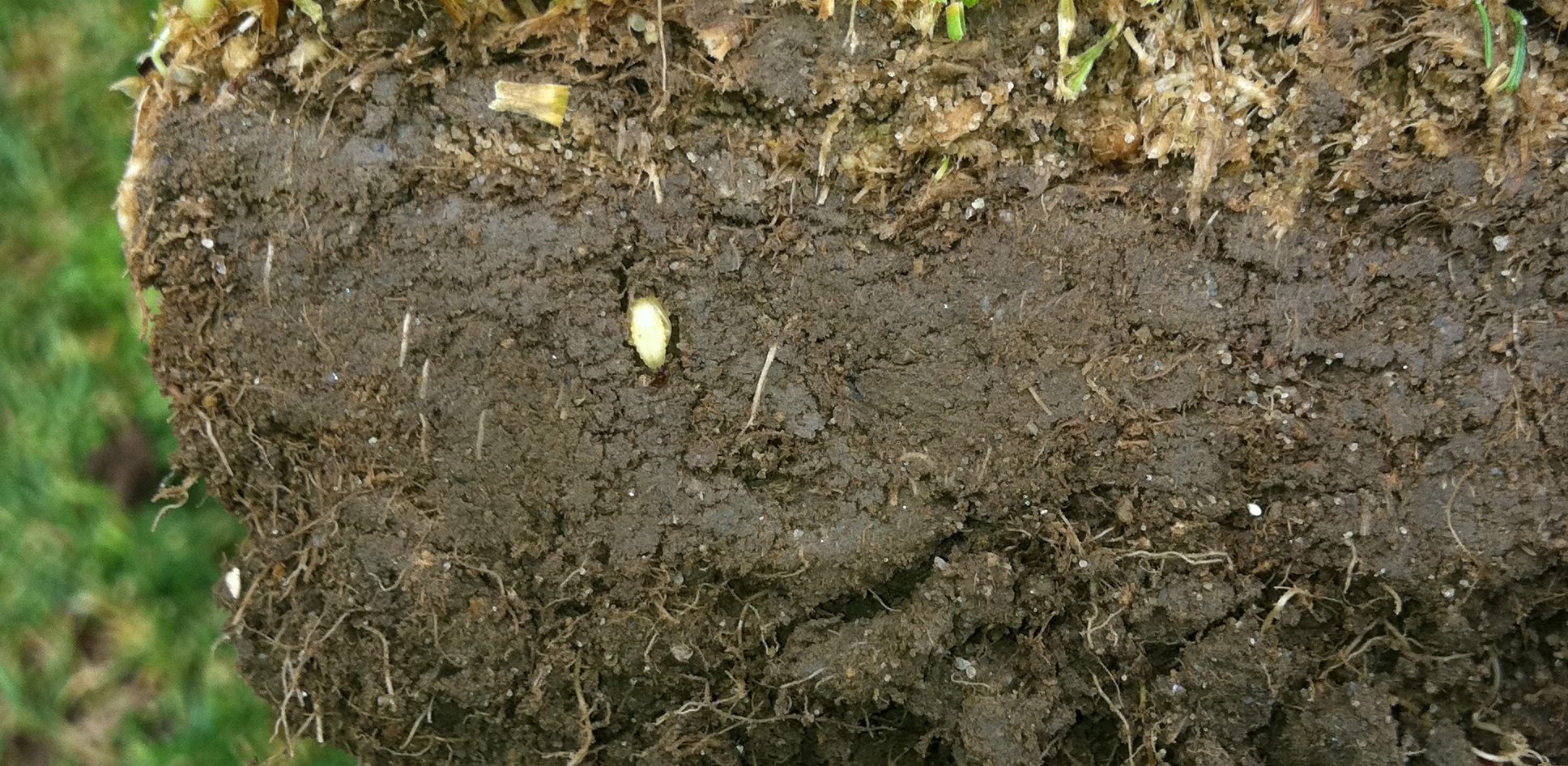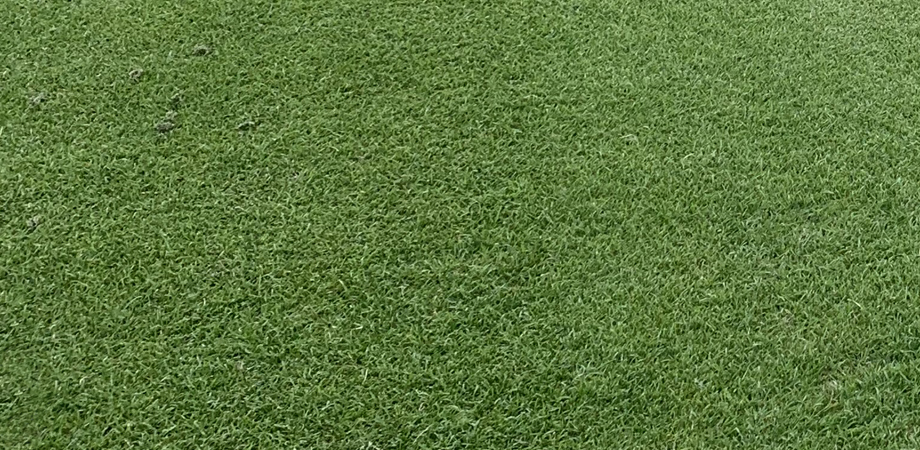In 2023, we had our first verified cases of annual bluegrass weevil damage in Kansas City and in Omaha. To date, this is the furthest west that they have been found in enough numbers to cause turf damage. While I don’t think we are going to be fully inundated by ABW and have widespread damage, it’s probably a good idea to be mindful of them going forward.
ABW will overwinter near tree lines, in taller grass, or among leaf litter. In the spring, adults will emerge and migrate toward lower-cut turf to feed and lay eggs. They will lay eggs just below the sheath of the plant. Larvae will begin feeding in the stem and work down to the crown. At this point, the damage will appear as tan or brown spots along the edges of fairways, greens, or tees. Damaged plants will be hollowed and easily break off at the crown. These areas will get larger and spread further into the affected areas. Annual bluegrass is their primary target, but they can also affect bentgrass, just not quite as severely as poa annua.
In the mid-transition zone, the timing of migration will generally be in mid to late April. Full forsythia bloom is a pretty close marker for the beginning of migration. This will continue, along with egg lay into May. A second migration/egg lay can occur in July. Luckily, better control options are available now compared to what we had when these first started infiltrating the northeast years ago.
Sample Program for ABW Control
- Mid/Late April: Aloft, 6 oz per acre (delay watering for 24 hours)
- Mid/Late May: Tetrino, 32 oz per acre
- June: Aloft, 6 oz per acre
- July: Tetrino, 32 oz per acre (If Necessary)
- August: Aloft, 6 oz per acre (If Necessary)
Another strategy for limiting damage from ABW and an all-around beneficial approach to managing your turf is to reduce the amount of Poa annua on your course. The new Velocity PM herbicide looks to be a valuable tool for reducing Poa annua effectively and safely. This is a reformulated version of Velocity that offers the flexibility of two different protocols for either gradual or aggressive reduction of poa. The gradual program involves five applications at 0.75 ounces per acre every 14 days. The more aggressive program would be applied twice at 2.25 ounces per acre, 14 days apart. It is recommended that with either program, average air temperatures are between 60-90°F. For more information on ABW control strategies or Velocity PM herbicide, please contact your ATS rep.











